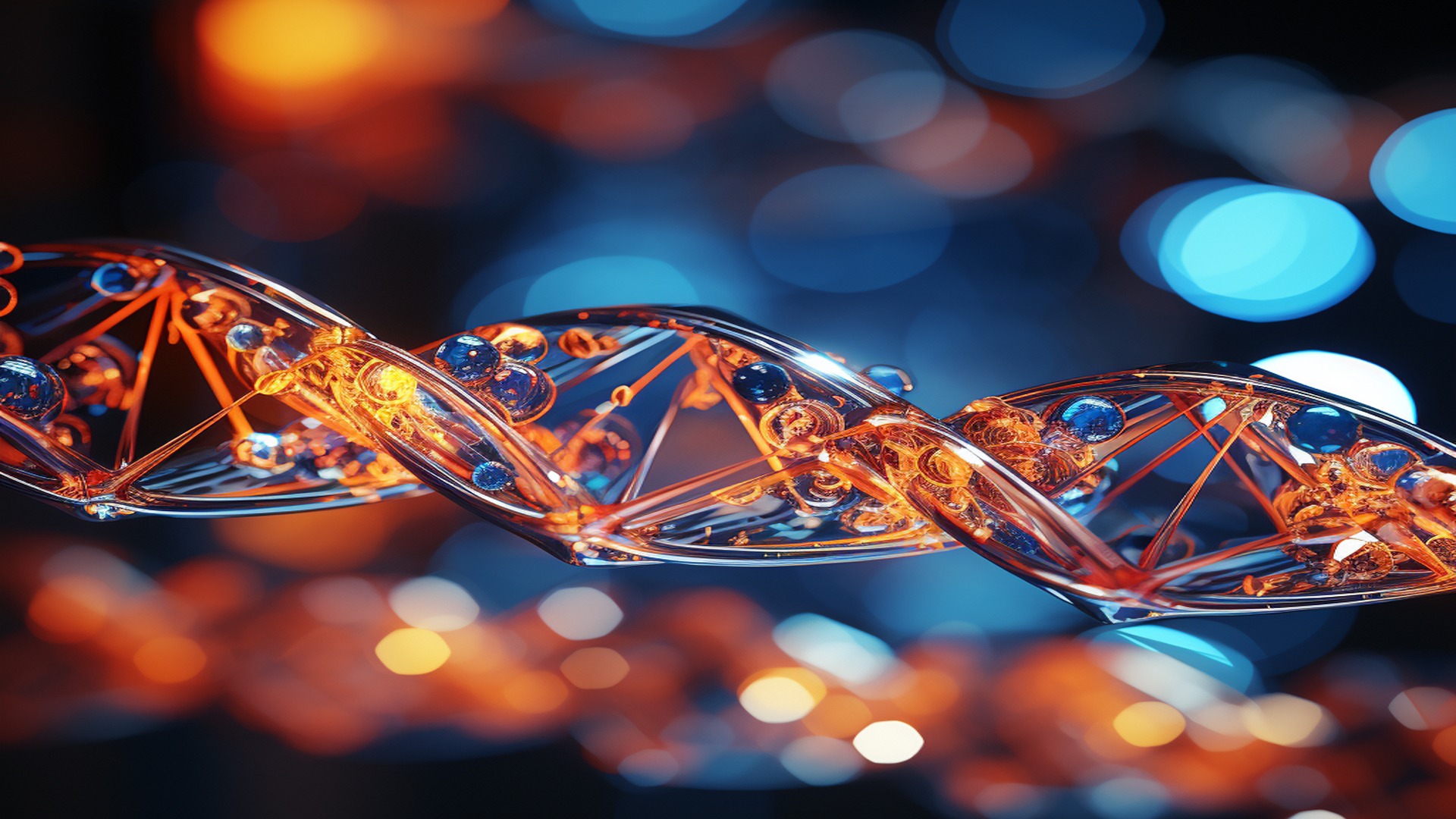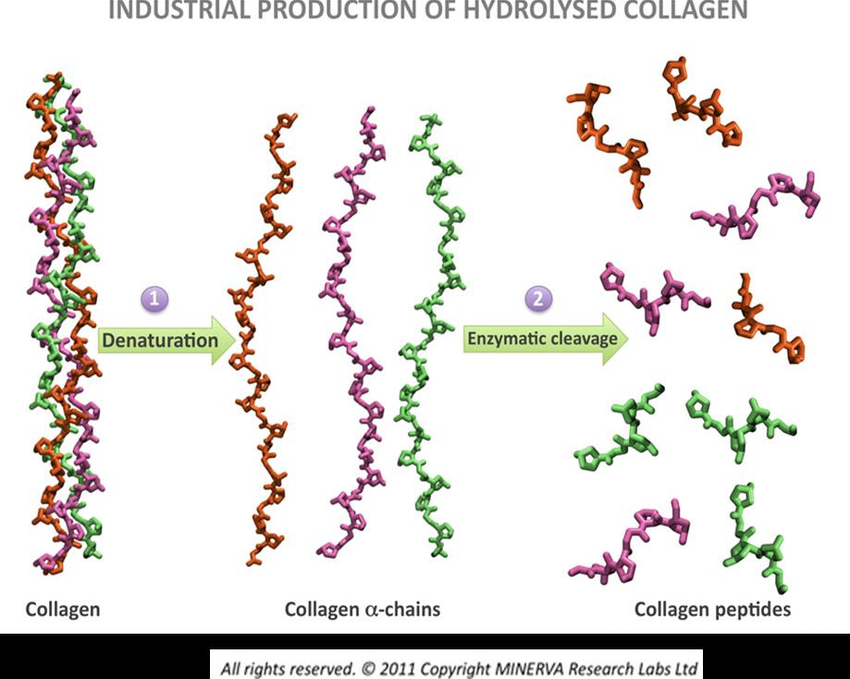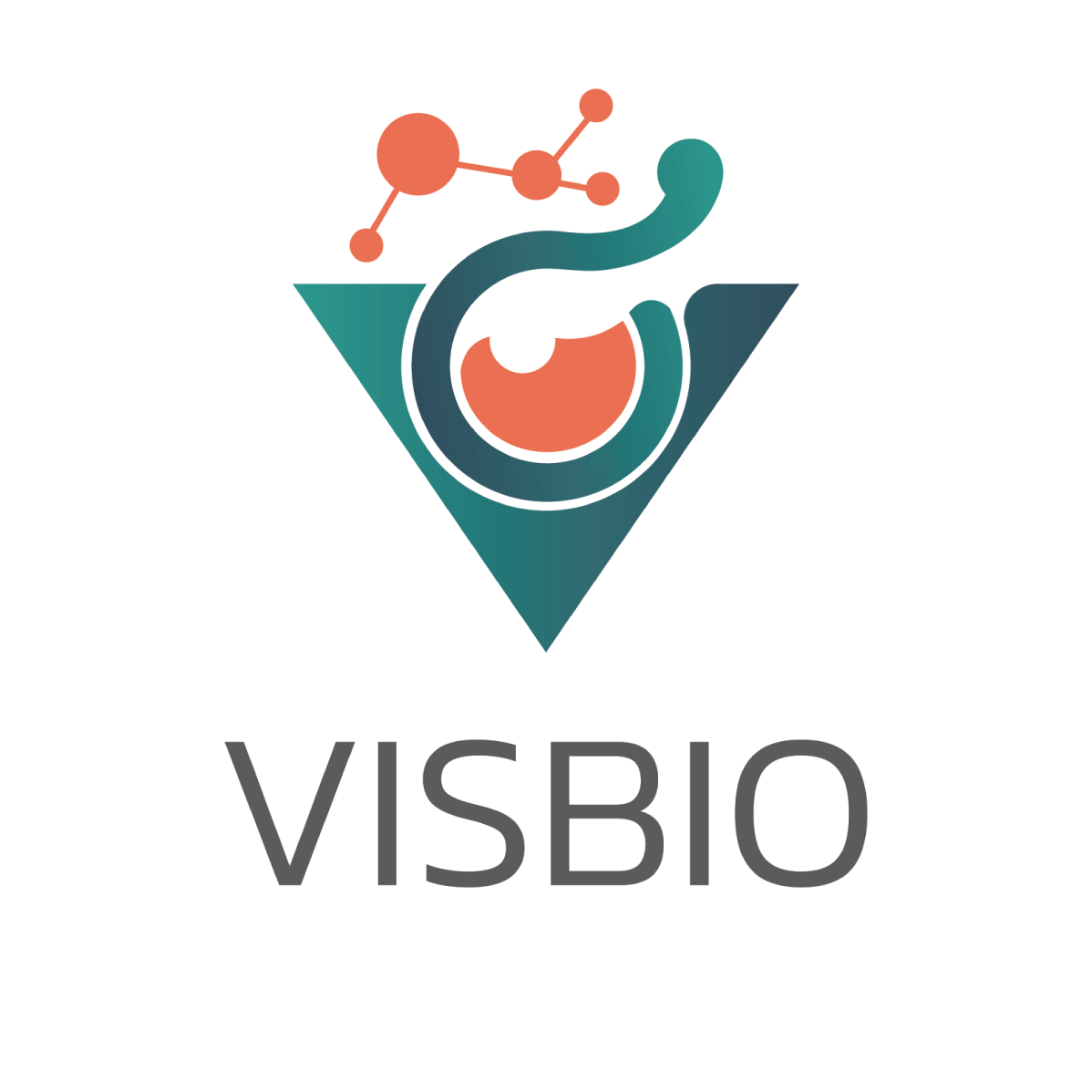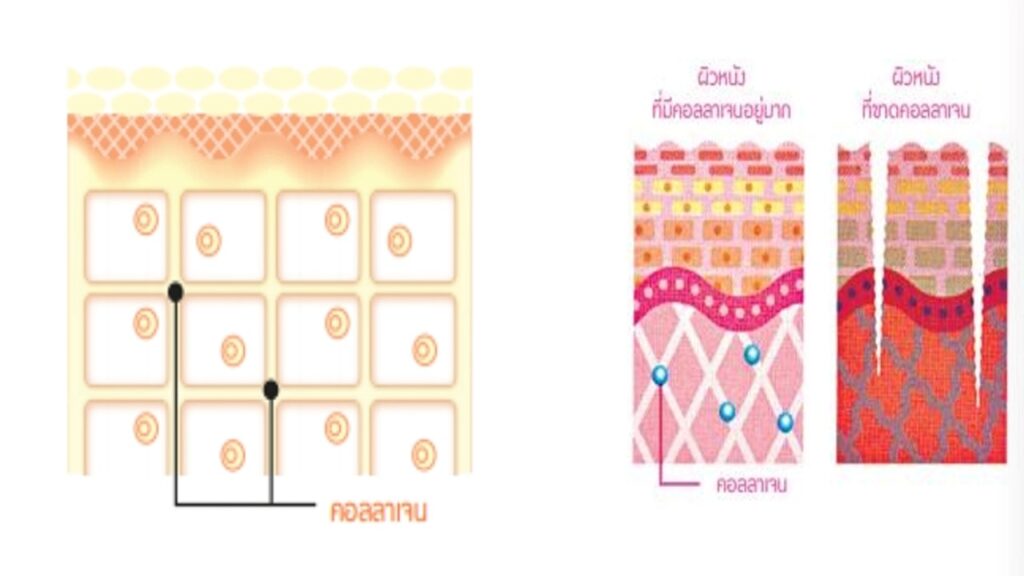
Service Information: Total Collagen Quantitative Analysis Testing using Enzyme assay
VISBIO Co., Ltd provides a service for the examination and quantitative analysis of the biological component (Biomarker) of Total Collagen in products, including extracts, beverages, food products, cosmetics, dietary supplements, and pharmaceutical products. We utilize a Collagen assay kit to provide accurate and reliable results.
In today’s competitive collagen product market, consumers have easy access to information and knowledge about these products. They can distinguish between high-quality products and those that rely solely on marketing claims. Therefore, brand owners must establish trust and credibility with consumers to choose their products for health and beauty care. Testing with this technique allows us to determine the quantitative of total collagen in your product, providing more than just label information. It’s a quality assurance report that helps build trust in your brand, based on factual data that consumers can rely on.
Collagen - What Is It?
You may have heard and come across the term ‘collagen’ in various media, but do you really know what collagen is and whether it benefits our bodies or not? In this article, we’ll provide an explanation for everyone to understand.
Collagen is a type of protein that forms a network of fibers beneath the surface of our skin, acting as a glue that holds individual cells together. It forms a dense network within the true skin layer, as well as in connective tissues. Collagen is considered a crucial component that allows cells to adhere to each other and enables various parts of the body to function normally. When the body’s collagen levels decrease, the cells that adhere together may become disorganized, leading to abnormalities in the body. This can result in various issues, as shown in the image. While our bodies can naturally produce collagen, as we age, our ability to produce collagen diminishes. This can be a cause of wrinkles, skin sagging, and even joint pain. However, aging is not the only factor that reduces collagen production; other factors such as UV radiation from sunlight and various pollutants also play a significant role.
Types of Collagens and Their Locations in the Body
Collagen is a crucial structural protein found in various tissues throughout the body, making up the majority, approximately 25-35%, of all proteins. It belongs to the group of fibrous proteins and is most commonly found within the extracellular matrix (ECM), along with elastin and hyaluronic acid. Collagen is predominantly located in tissues such as the skin, tendons, ligaments, bones, muscles, and blood vessels. Different types of collagens are found in various locations within the body, as shown in the table below:
Collagen Type | Location in Body |
Type I | Dermis, tendons, ligaments, bones |
Type II | Cartilage, vitreous humor of the eye |
Type III | Skin, blood vessel walls |
Type IV | Surrounding muscle and fat tissues |
Type V | Lungs, cornea of the eye, hair, bones |
Ingredients and Foods with Collagen-Boosting Properties
Consuming food is considered a crucial factor in collagen production in our bodies, and the types of ingredients and foods with collagen-boosting properties include the following:
- Products made from soybeans contain genistein, which has properties that help produce collagen and protect enzymes that damage the skin.
- Dark green vegetables such as spinach, cabbage, and kale are rich in a substance called lutein, which enhances the ability to produce collagen and utilize proteins efficiently.
- Red fruits and vegetables contain lycopene, which is an antioxidant and also promotes collagen production.
- Ingredients or foods that contain omega acids, such as salmon, tuna, almonds, or avocados.
- Aloe vera and berries from the berry family have properties that assist in collagen production.
In addition to the aforementioned foods, there are also vitamins and minerals that contribute to collagen production in the body, such as vitamin E, which helps protect collagen from damage caused by sunlight and free radicals, and vitamin A, as well as the mineral copper, which are necessary for collagen synthesis. However, copper is considered a toxic metal and must be obtained from food sources, such as sugarcane, cashew nuts, and green beans. The daily recommended collagen intake for the human body is at least 3,000 milligrams. However, it can be challenging to obtain an adequate amount of collagen solely from food. Therefore, there are now several businesses that offer products containing collagen as an ingredient.
Collagen in the Industry
Collagen used in various industries comes in different types. Native Collagen differs from Hydrolyzed Collagen. Hydrolyzed Collagen, also known as Collagen Hydrolysate, is collagen that has been broken down either enzymatically or through chemical processes, such as using acids like citric acid, hydrochloric acid, or phosphoric acid, to create shorter peptide chains. Hydrolyzed Collagen typically has a lower molecular weight, around 3-6 kDa, compared to Native Collagen, which has a higher molecular weight of 285-300 kDa. Native Collagen is naturally found in connective tissues, skin, or scales of animals such as fish, pork, beef, chicken, and more.
Collagen produced through enzymatic breakdown can transform into Gelatin and Hydrolyzed Collagen. If the molecular weight is reduced even further, it is referred to as Collagen Peptide, and it can be broken down into Tripeptides or Dipeptides.

Trends and Products in the Collagen-Infused Market
Even in the era of face masks, the beauty market in Thailand has continued to grow. According to Euromonitor, the beauty market had a value of 1.56 hundred billion baht in 2016, 1.787 hundred billion baht in 2017, 2.18 hundred billion baht in 2019, and 2.27 hundred billion baht in 2020, indicating consistent growth. As for the vitamins and supplements market, in 2020, it reached a value of 25,269 million baht, with an average growth rate of 8%. The collagen market dominates this segment, aligning with the findings from Grand View Research, which states that even though 15% of collagen is used in the beauty industry, collagen also contributes to various health aspects within the body. This has led to a 5.9% annual growth rate in the collagen industry. When looking at Google search statistics for the term ‘Collagen,’ there has been a significant increase in searches, up to 212%, since 2017, reaffirming that collagen continues to be a highly influential player in the health and beauty industry.
In 2023, the market for Bovine Collagen, derived from cows, is expected to surpass that of Fish Collagen by 32%. GME’s website provides information that Bovine Collagen is larger in size and easier to extract, resulting in lower energy consumption. This trend also considers environmental concerns. However, Marine Collagen, derived from fish, is expected to grow as well.
The health and beauty industry extensively utilizes collagen for various products, including:
- Beverage products like fruit juices and vitamin drinks.
- Cosmetics products aimed at reducing wrinkles and nourishing the skin for a radiant appearance.
- Collagen supplements and protein sources for the body.
- Products used in cosmetic surgeries for severe burn treatments, scar revision, or procedures to strengthen muscles.
Analysis and Testing of Total Collagen Quantity in Products
The analysis and testing of the quantity of Total Collagen in products have become essential in today’s competitive collagen product market. Consumers can easily access information and knowledge about products, enabling them to differentiate between high-quality products and those that rely solely on marketing claims. Therefore, brand owners must find ways to enhance trust and reliability among consumers to choose their products for health and beauty care.
There are various methods for analyzing and testing the quantity of collagen in products. One common technique is Mass Spectrometry, which analyzes the mass-to-charge ratio of charged particles to determine the mass of components in a sample. This method helps identify the elemental composition of substances or molecules and reveals the chemical structure, such as peptides, and other chemical compounds. Another method involves using collagen assay kits, which are used to test the quantity of collagen in a test sample. The test compares the sample with collagen standards and measures the absorbance values at specific Ex/Em wavelengths, usually at 375/465 nm. The collagen quantity in the test sample can then be calculated from the standard curve. This method allows for the determination of the total collagen content in the product. The benefit of using our collagen quantity analysis and testing service goes beyond the information stated on product labels. It provides a quality assurance report for your product, enhancing your brand’s credibility and building consumer trust based on factual evidence.
Literature:
- ปรมัตถ์ ทองคำคูณ, กนิษฐา ปัญธิญา, ธัญชนก กันทวงศ์, พิมพ์ชนก พวงย้อยแก้ว และนพพล เล็กสวัสดิ์, คอลลาเจน และการเลือกรับประทานอาหารที่ช่วยส่งเสริมการผลิตคอลลาเจน, สาขาวิชาวิศวกรรมกระบวนการอาหาร สำนักวิชาอุตสาหกรรมเกษตร คณะอุตสาหกรรมเกษตร มหาวิทยาลัยเชียงใหม่
- ตลาด “คอลลาเจน” แข่งดุ เข้าสู่ยุคคัดตัวจริง, 14 ตุลาคม 2564 แหล่งที่มา: https://www.thansettakij.com/insights/499695 ค้นหาวันที่: 10/8/2566
- พรรณธร สุจารีย์, ปัจจัยที่มีผลต่อการซื้อผลิตภัณฑ์เสริมอาหารคอลลาเจนของประชากรในกรุงเทพมหานคร, สาขาการเงินและการธนาคาร คณะบริหารธุรกิจ มหาวิทยาลัยรามคำแหง
- ดร. เภสัชกรหญิงพนิตา สุวรรณน้อย, คอลลาเจน เคล็ดลับความอ่อนเยาว์?, แหล่งที่มา: https://pharm.tu.ac.th/uploads/pharm/pdf/articles/20190328_022.pdf
- ลีลาวดี พงษ์คุณากร, 2564, การเปรียบเทียบประสิทธิผลระหว่างคอลลาเจนในรูปการรับประทานและการทาต่อการลดริ้วรอยและความหยาบของผิว, วิทยาศาสตร์มหาบัณฑิต สาขาวิชาวิทยาการชะลอวัยและฟื้นฟูสุขภาพ วิทยาลัยการแพทย์บูรณาการ มหาวิทยาลัยธุรกิจบัณฑิตย์.




